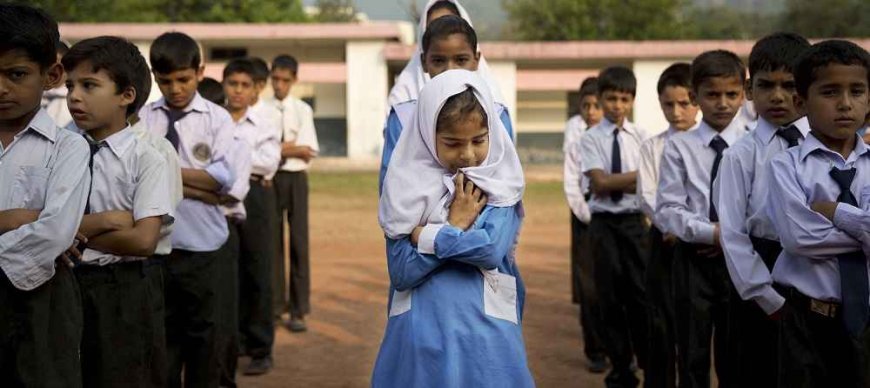Bridging the Divide: Ensuring Equity and Access in Education for All
The digital divide, lack of resources in underserved communities, and other barriers hinder educational opportunities for many

Education is a fundamental human right, and its access should be equitable for every individual, regardless of their background or circumstances. However, in the modern world, educational equity remains an ongoing challenge, with disparities persisting in access to quality education. The digital divide, lack of resources in underserved communities, and other barriers hinder educational opportunities for many. In this article, we will explore the issues of educational equity and access, shedding light on the digital divide, the challenges faced by underserved communities, and strategies to bridge the gap, ensuring a fair and inclusive education system for all.
The Digital Divide: A Barrier to Educational Equity
The digital divide refers to the disparity in access to technology and the internet between different socioeconomic groups. As technology becomes integral to education, the digital divide widens the gap between those who have easy access to online resources and those who do not. Students without reliable internet access or access to devices may struggle to participate in online learning, hampering their educational progress.
Closing the digital divide is crucial for promoting educational equity. Governments, educational institutions, and private organizations must work together to provide internet connectivity and devices to students in underserved communities. Initiatives such as subsidizing internet costs, providing laptops or tablets to students, and establishing Wi-Fi hotspots in remote areas can help bridge this divide and create equal opportunities for all learners.
Access to Quality Education in Underserved Communities
Underserved communities, including those in rural or economically disadvantaged areas, often face challenges in accessing quality education. Limited resources, including funding for schools, qualified teachers, and learning materials, can lead to educational disparities that perpetuate social inequality.
To address this issue, investments in education must be prioritized in underserved communities. Adequate funding for schools, teacher training programs, and the provision of modern learning resources can significantly improve the quality of education in these areas. Additionally, partnerships with non-profit organizations and community-based initiatives can complement efforts to ensure that every child has access to a high-quality education, regardless of their ZIP code.
Inclusive Curriculum and Teaching Practices
Promoting educational equity also involves creating an inclusive curriculum and adopting teaching practices that cater to diverse learning needs. The curriculum should reflect the cultural diversity of the student population, embracing various perspectives and experiences. By integrating multicultural content and diverse narratives, educators can foster an inclusive learning environment where all students feel represented and valued.
Differentiated instruction is another essential aspect of promoting educational equity. Tailoring teaching methods to meet individual learning needs ensures that all students can engage with the material at their own pace and in ways that resonate with them. Emphasizing inclusive practices ensures that every student, regardless of their background or abilities, has equal opportunities to succeed.
Addressing Socioeconomic Barriers
Socioeconomic barriers can significantly impact a student's ability to access quality education. Issues such as poverty, homelessness, and food insecurity can disrupt a student's ability to focus on their studies and hinder their educational progress.
To address these barriers, schools can collaborate with community organizations to provide support services such as free or reduced-price meals, mental health counseling, and access to resources that can help alleviate the impact of poverty on students' education. By adopting a holistic approach to student welfare, schools can ensure that students' basic needs are met, creating a stable foundation for academic success.
Building Strong Partnerships and Collaboration
Tackling issues of educational equity requires a collaborative effort involving various stakeholders. Governments, educational institutions, nonprofits, businesses, and communities must work together to identify challenges and develop comprehensive strategies.
Public-private partnerships can be instrumental in driving meaningful change. Businesses and corporations can contribute resources, mentorship programs, and internship opportunities, while educational institutions can offer insights into the needs of students and communities. Together, these partnerships can create innovative solutions that leverage the strengths of each sector to address educational equity effectively.
Educational equity and access are fundamental principles that drive progress and social mobility. Addressing the digital divide, improving access to quality education in underserved communities, adopting inclusive teaching practices, and tackling socioeconomic barriers are critical steps in ensuring that all students have equal opportunities to thrive.
By embracing collaboration, creativity, and empathy, we can bridge the gap and create an education system that fosters diversity, empowers learners, and transforms lives. Achieving educational equity is not just an aspiration; it is a shared responsibility to build a future where every individual has the opportunity to unlock their full potential and contribute to a more just and inclusive society.
